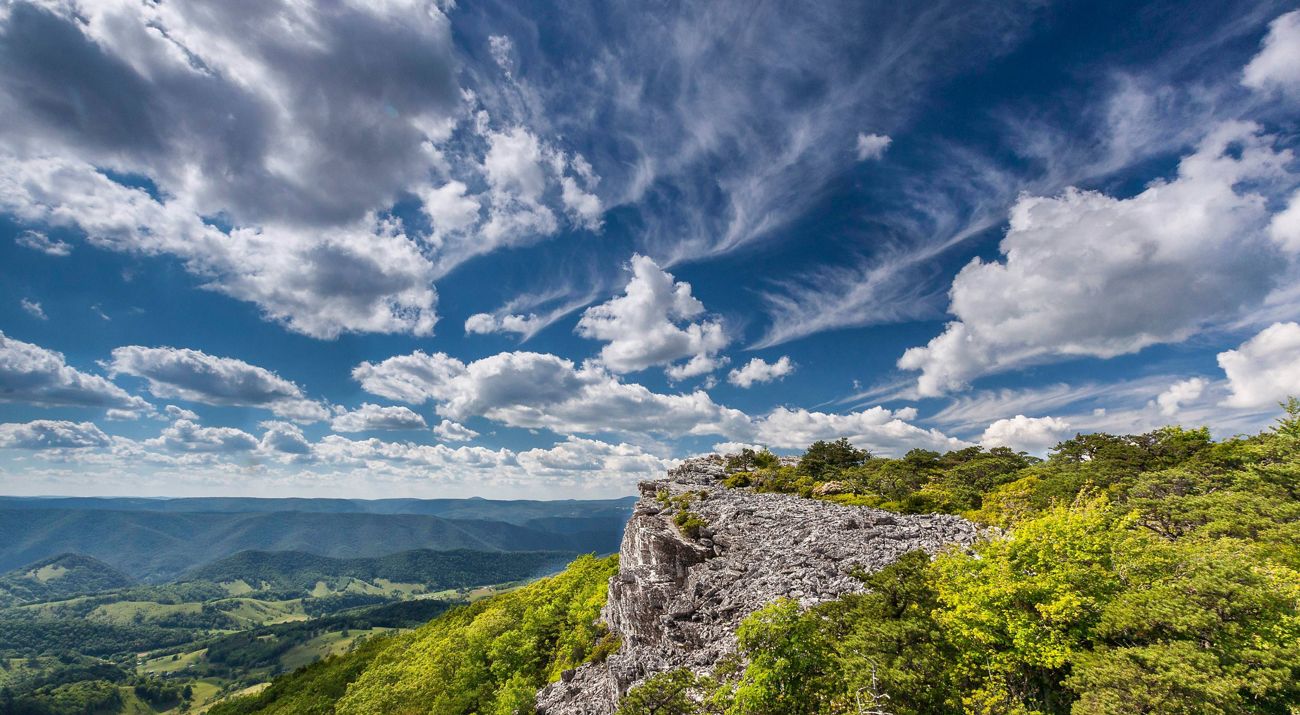Description
Bare, rocky, sandstone summits, West Virginia's largest native stands of paper birch, and the Central Appalachian's largest fire-maintained pine barrens can be found here.
Other high Allegheny ridges to the west intercept weather systems, causing storms to drop much of their rainfall and snowfall on those mountains. As a result, North Fork Mountain is one of the driest mountains in the East. Red spruce, which usually dominates at these high elevations, is very local on North Fork Mountain, with a virgin stand of spruce occurring on the preserve. Red oak forests and pine barrens clothe the ridgetops. Recurring fires have been a major ecological process defining these forests and barrens. The barrens consist of stunted 60 to 100 year old pitch and table mountain pines, with a thick understory of black huckleberry, mountain laurel and scrub oak.
Plants
The largest remaining population of variable sedge, a plant dependent upon natural fires, thrives here. Beach heather, a shrub typically found on coastal dunes, occurs here in small wind-swept pockets of sand. Species restricted to the Southern and Central Appalachians, such as Michaux's saxifrage, and Allegheny onion also occur here.
Animals
Bear, bobcat, Allegheny woodrats, and gray foxes hunt the slopes of oak and pine and small streams support native brook trout populations. Several boreal species occur here, including the pink-edged sulfur butterfly whose larvae feed on blueberries.
What We're Doing
Vacation home developments already cover the mountain's peaks to the north of Panther Knob. The Preserve was created in 1984 with the purchase of 250 acres. To date, the Conservancy owns 359 acres and has protected 2,110 acres in conservation easements, with another 420 acres in nearby conservation easements The most recent acquisition was a conservation easement in 2004. The Conservancy is also controlling non-native invasive weeds that threaten the native species and conducting research.
